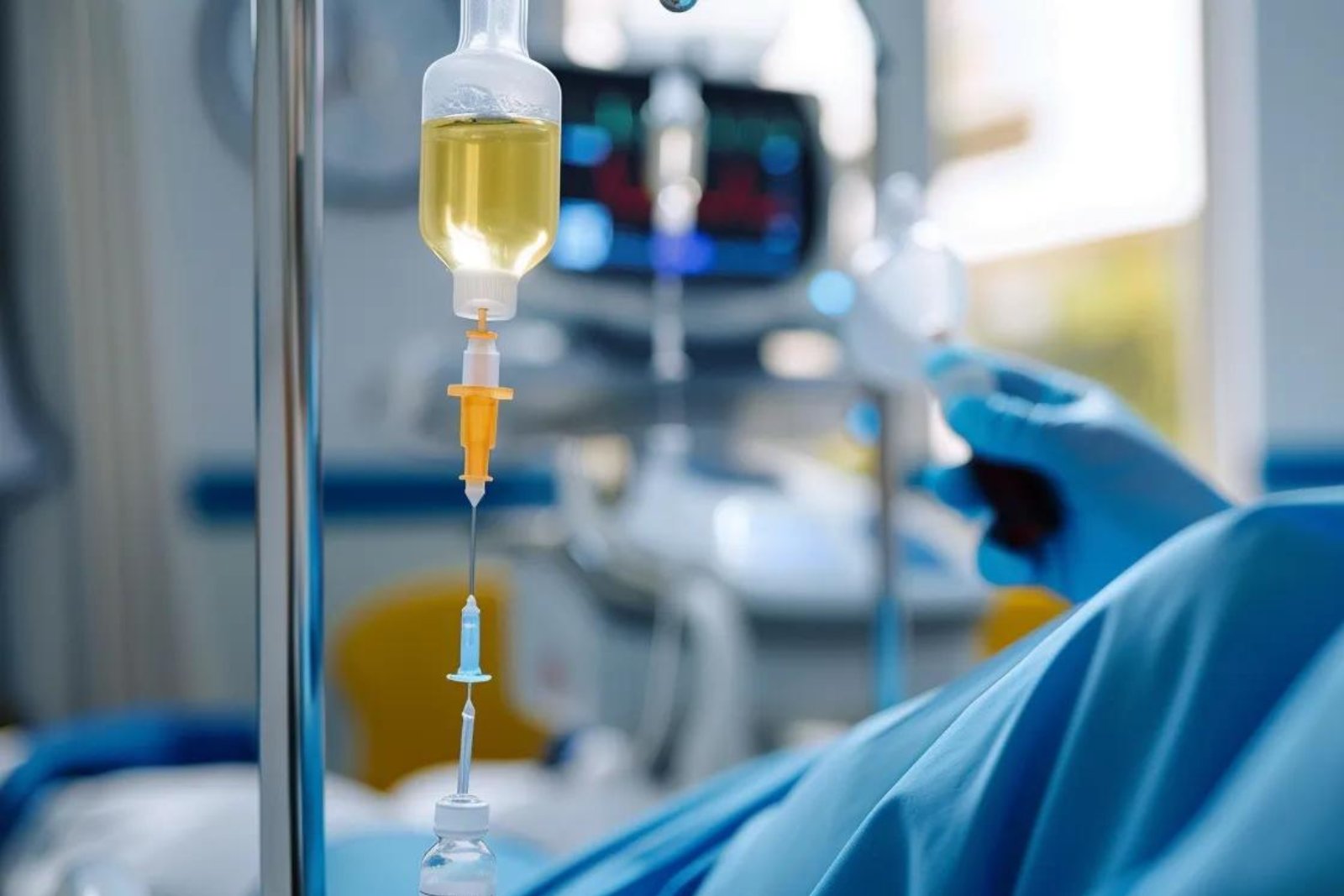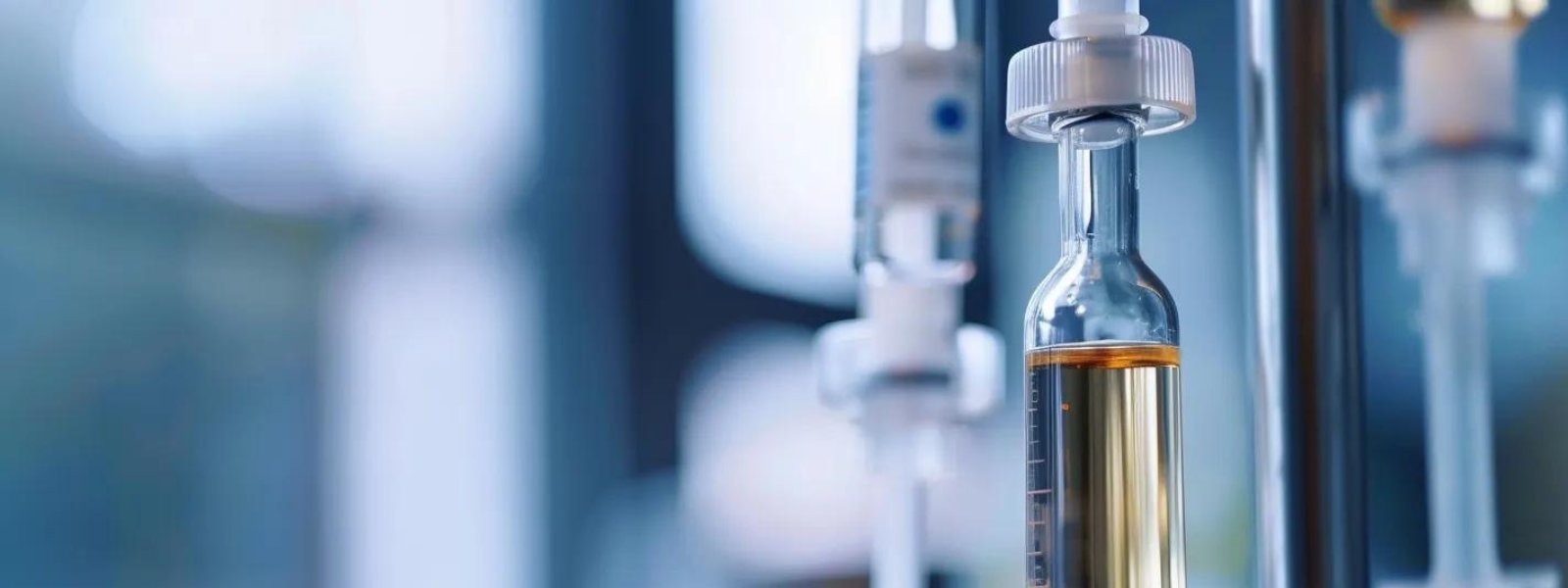
IV therapy serves has three purposes: hydration through fluid delivery, medication administration through bloodstream access, and nutritional support when oral intake fails. Medical professionals insert a small tube into a vein to deliver these treatments directly into the bloodstream, which produces faster results than oral methods.
Healthcare facilities use IV therapy in hospitals, clinics, and wellness centers. This guide explains how IV therapy functions, why doctors prescribe it, and which health benefits it provides to different patient populations.
What Is IV Therapy and How Does It Work?
IV therapy delivers fluids, medications, or nutrients directly into veins through a catheter. A nurse or doctor inserts a needle into a vein in the arm or hand. The needle connects to tubing attached to a bag containing the treatment solution.
The bag holds various substances including saline solution, vitamins, medications, or nutrients. Liquid flows from the bag through the tube into the vein. From there, contents enter the bloodstream and circulate throughout the body.
This delivery method bypasses the digestive system completely. Oral medications pass through the stomach and intestines first, which delays absorption. Stomach acid breaks down certain vitamins and minerals before the body can use them. IV therapy delivers 100% of treatment directly into blood circulation, making it the fastest way to provide medical interventions.
Medical professionals developed IV therapy over many decades. Attempts at providing intravenous therapy have been recorded as early as the 1400s, but the practice did not become widespread until the 1900s. Modern IV therapy uses sterile equipment, precise dosing mechanisms, and safety protocols.
What Are the Three Main Purposes of IV Therapy?
Purpose 1: What Role Does Hydration Play in IV Therapy?
IV therapy provides hydration by delivering water and electrolytes directly into the bloodstream. The human body contains approximately 60% water. Cells need water to function properly. Dehydration occurs when the body loses more fluid than it takes in. Water supports every cellular process including nutrient transport, waste removal, temperature regulation, and organ function.
Electrolytes are minerals that carry electrical charges in the body. These include sodium, potassium, calcium, magnesium, chloride, and phosphate. Electrolytes control muscle contractions, nerve signals, pH balance, and fluid distribution between cells. When electrolyte levels drop too low, serious health problems can develop.
Dehydration can happen quickly during illness, injury, or environmental stress. Severe dehydration affects blood pressure, heart function, kidney performance, and brain activity. IV hydration restores normal body function faster than drinking fluids orally.
Patients need IV fluids during vomiting or diarrhea episodes, surgical procedures requiring fasting, severe injury or burn treatment, and heat-related illness recovery. Athletes who lose excessive fluids through intense training may also benefit from IV hydration.
The National Home Infusion Association reports home infusion therapy costs $122 to $225 per day, compared to inpatient care at $586 to $798 per day. This cost difference has led to increased use of home-based IV therapy services.
Hydration solutions contain normal saline, which is salt water matching body fluid composition. The most common formula is 0.9% sodium chloride. Solutions also include lactated Ringer's solution containing sodium, chloride, potassium, calcium, and lactate. Doctors use lactated Ringer's for rapid fluid replacement after blood loss or severe dehydration.
Purpose 2: How Does IV Therapy Deliver Medications?
IV therapy administers medications directly into the bloodstream for rapid therapeutic effect. This method provides precise dosing control and complete medication absorption without digestive interference.
Speed allows medication to enter the bloodstream immediately, producing effects within minutes. Precision gives healthcare providers control over exact dosage amounts and infusion rates. Absorption means the body receives 100% of prescribed medication without losses from digestive breakdown. Tolerance helps because treatment avoids gastrointestinal distress.
Some medications have virtually zero oral bioavailability, meaning they cannot absorb through the digestive system. Stomach acid destroys certain antibiotics, enzymes, and protein-based medications. Other drugs undergo extensive first-pass metabolism in the liver, which deactivates them before they reach therapeutic levels.
The bioavailability of an IV medication is by definition 100%, unlike oral administration where medication may not be fully absorbed. This complete absorption matters most for medications with narrow therapeutic windows. Small differences between effective and toxic doses require exact control.
Common IV medications include antibiotics that fight bacterial infections. Doctors prescribe IV antibiotics for severe infections like pneumonia, sepsis, meningitis, and bone infections. Chemotherapy drugs treat cancer with precise dosing. Iron infusions correct iron-deficiency anemia. Psychiatric medication management sometimes includes IV administration for conditions requiring immediate therapeutic levels.
Emergency departments rely heavily on IV medication delivery because it bypasses absorption delays and produces predictable blood concentrations. Anesthesiologists use IV medications exclusively during surgery for precise control.
Purpose 3: What Nutritional Support Does IV Therapy Provide?
IV therapy supplies essential nutrients when patients cannot eat or absorb food through normal digestion. Digestive disorders, surgical recovery, severe illness, and cancer treatment can all interfere with normal eating and nutrient absorption.
The digestive system normally breaks down food into molecules small enough to cross the intestinal wall. Protein becomes amino acids, carbohydrates convert to simple sugars, and fats break down into fatty acids. This complex process requires functioning digestive organs and adequate enzyme production.
Patients needing IV nutrition include those with post-surgical recovery limiting food intake, digestive disorders preventing nutrient absorption, severe illness causing persistent vomiting, and cancer treatment reducing appetite. Inflammatory bowel diseases can damage the intestinal lining so severely that normal absorption becomes impossible.
Total parenteral nutrition (TPN) provides all nutritional needs intravenously including calories, protein, vitamins, minerals, and fluids. Partial parenteral nutrition supplements oral intake when patients can eat some food but cannot meet full nutritional requirements.
IV nutrition contains vitamins including C, B-complex vitamins, and vitamin D. Minerals include magnesium, calcium, zinc, and selenium. Amino acids provide the building blocks for protein synthesis. Glucose serves as an energy source. Lipids supply essential fatty acids.
The Myers' Cocktail represents one popular formulation containing B vitamins, vitamin C, calcium, and magnesium. Dr. John Myers developed this combination in the 1960s for patients experiencing fatigue and acute infections. Nutritional IV therapy also plays a role in weight loss programs where vitamin deficiencies might slow metabolism.
What Benefits Does IV Therapy Offer?

How Quickly Does IV Therapy Work?
IV therapy produces effects within minutes to hours because treatments enter the bloodstream immediately. Oral medications require digestive processing, which delays therapeutic action by several hours or days.
Emergency situations benefit from this rapid treatment response. Epinephrine given through IV during anaphylaxis works within seconds. IV glucose raises blood sugar in hypoglycemic patients almost immediately. Patients with severe migraines find relief faster with IV medications than oral pills.
Does IV Therapy Improve Absorption Rates?
IV administration achieves 90-100% nutrient absorption compared to approximately 50% from oral supplements. Digestive enzymes break down oral supplements, and the body absorbs only about half of available nutrients while excreting the remainder through urine.
Some vitamins absorb poorly through the digestive system. Vitamin B12 requires intrinsic factor for absorption. People with pernicious anemia cannot make enough intrinsic factor and develop B12 deficiency despite adequate dietary intake. IV B12 bypasses this absorption problem.
Magnesium supplements commonly cause diarrhea at doses needed to correct deficiency. IV magnesium delivers therapeutic amounts without digestive side effects. High-dose vitamin C cannot be achieved through oral intake because intestines can only absorb limited amounts at once.
Which Health Conditions Respond to IV Therapy?
IV therapy treats chronic pain through direct delivery of anti-inflammatory medications. Migraine headaches respond to IV combinations targeting pain, nausea, and inflammation. Patients often experience relief within 30 minutes.
Fatigue improves with IV vitamins, particularly B-complex vitamins that support energy production. Weakened immune function benefits from IV vitamin C and zinc. CDC data shows approximately 6.2% of adults aged 18-64 in the U.S. have reduced immune function, and about 2.6% of children experience weakened immunity.
Dehydration responds rapidly to IV fluid therapy. Alcohol consumption causes dehydration through increased urination. Food poisoning leads to fluid losses through vomiting and diarrhea. Exercise in hot conditions depletes water and electrolytes. Primary care physicians may recommend IV therapy for patients with chronic conditions affecting nutrition or hydration status.
How Has IV Therapy Advanced in Healthcare?
The global IV hydration therapy market reached $2.64 billion in 2024 and projects growth to $5.66 billion by 2033. North America dominates the market with a 46.8% share in 2024. Consumer awareness of preventive health increased significantly after the COVID-19 pandemic. People now prioritize proactive health measures including hydration and immune support.
Treatment locations now extend beyond hospitals to wellness centers, sports medicine facilities, home healthcare services, and airport locations. Mobile IV therapy companies bring treatments directly to homes and offices.
AI integration in IV therapy can reduce patient wait times by 30%, decrease staff overtime by 50%, and increase patient capacity by 15%. Smart infusion pumps deliver precise medication doses with enhanced safety monitoring. Electronic health records integration reduces transcription errors. Barcode scanning verifies patient identity and medication correctness before infusion begins.
Is IV Therapy Safe?
IV therapy carries minimal risks when administered by trained medical professionals. Minor reactions include small bruise at insertion site, mild swelling, cool sensation in the arm, and brief discomfort during needle placement. These effects typically resolve within hours to days.
Serious complications like infections, allergic reactions, or vein inflammation occur rarely. Infection risk increases with longer catheter dwell time and improper sterile technique. Phlebitis means vein inflammation that causes pain, redness, and swelling. Treatment includes catheter removal and warm compresses.
Patients with compromised immune systems or heart conditions face slightly higher risk. Mental health conditions sometimes require consideration during treatment planning, particularly regarding medication interactions.
Safety measures include receiving treatment from licensed professionals, disclosing all allergies, reporting current medications, and choosing accredited medical facilities. Accreditation requires facilities to meet specific safety criteria and follow infection control protocols.
Who Benefits From IV Therapy?
Post-surgical recovery patients often need IV fluids during hospital stays. Cancer patients receiving chemotherapy depend on IV administration because most chemotherapy drugs work only when given intravenously. Individuals with severe infections require IV antibiotics. People with malabsorption disorders may need IV nutrition. Emergency dehydration cases require immediate IV fluid resuscitation.
Wellness applications include energy level enhancement through B vitamin infusions. Athletic recovery acceleration appeals to athletes seeking faster recovery between training sessions. CDC reports show about 10% of Americans lack adequate amounts of iron and vitamins C, D, B6, and B12.
Athletes use IV therapy to restore hydration after intense training sessions. Endurance athletes lose significant fluid and electrolytes through sweat. However, the World Anti-Doping Agency restricts IV infusions over 100 mL per 12 hours for competitive athletes. Telehealth consultations may provide guidance on whether IV therapy makes sense for specific athletic goals.
What Happens During IV Therapy?
The process begins with preparation where a nurse reviews medical history. Vein location involves applying a tourniquet around the upper arm to make veins more visible. Site cleaning uses antiseptic solution to kill bacteria. Needle insertion produces a brief pinch sensation. The nurse advances the needle into the vein until blood return confirms proper placement.
Treatment starts when the nurse connects tubing and monitors flow. Most IV therapy sessions last 30 minutes, though duration varies based on treatment type. Simple hydration might take only 15-20 minutes. Vitamin infusions typically require 30-45 minutes. Blood transfusions take several hours.
Patients can read books or use electronic devices during treatment. Most clinics provide comfortable recliners and quiet environments.
How Does IV Therapy Compare to Oral Supplements?
IV therapy produces effects within minutes to hours while oral pills require hours to days. Absorption rates differ dramatically. IV achieves 90-100% delivery to bloodstream. Oral supplements typically provide 20-50% absorption.
IV causes no stomach problems, nausea, or cramping. Many oral vitamins cause digestive upset, especially iron and magnesium. Dosing precision favors IV therapy because healthcare providers control exactly how much enters the bloodstream.
Convenience clearly favors oral supplements. Patients can take pills anywhere without medical supervision. IV therapy requires medical facilities and trained personnel. Cost typically runs higher for IV therapy. Insurance usually covers medically necessary IV therapy but rarely pays for wellness treatments. Anxiety and depression treatment sometimes benefits from nutritional support through either delivery method.
What Types of IV Therapy Exist?
Hydration IV treats illness-related dehydration from vomiting or diarrhea. Hangover symptoms improve with hydration because alcohol causes dehydration. Heat exhaustion occurs when the body loses excessive fluid through sweating.
Vitamin IV supports energy production through B-complex vitamins. Immune function support relies on vitamin C. General wellness formulations combine multiple vitamins and minerals. Fatigue reduction targets underlying nutritional causes.
Medical IV includes antibiotic therapy for severe infections. Chemotherapy administration requires precise dosing. Pain management delivers rapid relief. Blood transfusions replace red blood cells.
Performance IV contains electrolyte replacement for athletes. Amino acids provide building blocks for muscle repair. B vitamins help convert food into cellular energy. Antioxidants reduce oxidative stress.
How Should Patients Choose IV Therapy Providers?

Licensed medical professionals should administer treatments. Sanitary facilities provide clean treatment spaces meeting health department standards. Positive patient reviews indicate satisfaction with care quality. Transparent pricing shows clear cost information. Medical supervision means physician oversight of all procedures.
South Florida Med Group provides professional IV therapy with experienced medical staff creating personalized treatment plans.
What Future Developments Will Impact IV Therapy?
Mobile IV services providing home treatment continue expanding. Customized nutrient formulations based on lab testing represent an evolving trend. Advanced vein-finding technology helps nurses visualize veins beneath skin surface. Expanded wellness research will clarify which applications have scientific support.
The global market for IV therapy projects growth from $57.0 billion in 2024 to $74.4 billion by 2029. This represents a 5.5% compound annual growth rate driven by aging populations and chronic disease increases. ADHD and related conditions sometimes involve nutritional components that IV therapy might address.
Frequently Asked Questions About IV Therapy
How Long Does It Take for IV Therapy to Work?
IV therapy produces effects within minutes to hours depending on treatment type. Hydration improvements occur within 15-30 minutes as fluids enter circulation. Medication effects begin immediately. Emergency medications like epinephrine work within seconds.
Is IV Therapy Covered by Insurance?
Insurance coverage depends on medical necessity. Medically required IV therapy for dehydration, infections, or chemotherapy typically receives coverage when prescribed by a physician. Elective wellness treatments usually require out-of-pocket payment. Patients should verify coverage before treatment.
Can You Eat or Drink During IV Therapy?
Patients can eat and drink normally during IV therapy sessions unless medical restrictions apply. Food and beverages do not interfere with IV treatment effectiveness because substances bypass the digestive system. Most wellness clinics encourage normal eating throughout treatment.
How Often Can You Get IV Therapy?
Treatment frequency depends on purpose and medical guidance. Medical IV therapy continues as long as conditions require. Wellness IV therapy recommendations vary widely. Some providers suggest monthly treatments for maintenance. Medical supervision helps determine appropriate frequency.
Are There Any Restrictions After IV Therapy?
Most patients resume normal activities immediately after IV therapy. Patients should avoid strenuous exercise for several hours if receiving large fluid volumes. The insertion site should stay clean and dry for 24 hours. Watch for signs of infection including redness or swelling.
Final Thoughts
IV therapy accomplishes three core functions including hydration delivery, medication administration, and nutritional supplementation. This treatment method produces faster, more complete results than oral alternatives because substances enter the bloodstream directly.
Patients interested in IV therapy should consult their doctor or qualified healthcare provider. Medical professionals can determine treatment appropriateness and explain specific benefits and risks. Health optimization requires appropriate treatment methods for each person's needs.
The distinction between medically necessary IV therapy and elective wellness treatments matters for insurance coverage and clinical benefit. Medical conditions requiring IV therapy have strong evidence supporting effectiveness. Many wellness applications lack rigorous scientific validation.
Contact South Florida Med Group to discuss IV therapy options and determine whether this treatment approach fits your health needs. Professional medical guidance and personalized care support optimal health outcomes through evidence-based treatment selection.

.png)
.png)
.png)



.png)
.png)
.png)



.png)

.png)
